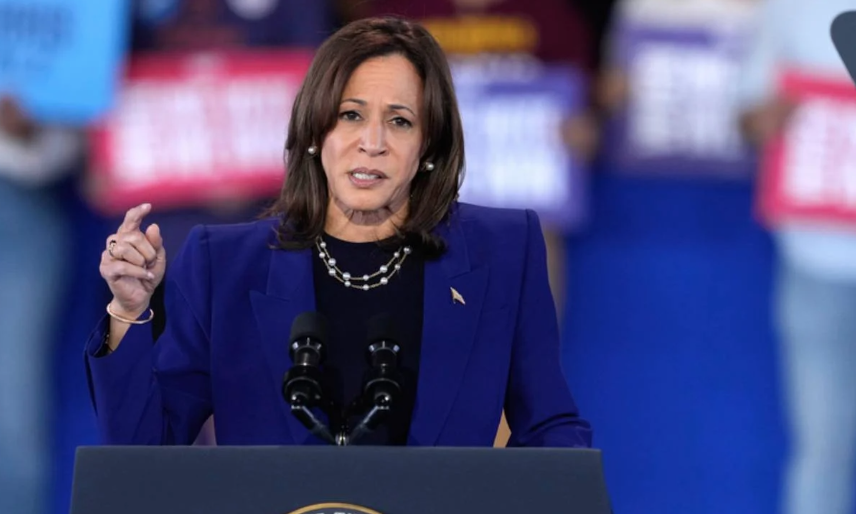U.S. Job Growth Falls Short of Expectations in October

The pace of job creation in the U.S. significantly slowed in October, surprising analysts who had anticipated a stronger performance.
On Friday, the Labor Department reported that businesses added a mere 12,000 jobs in October, starkly lower than the 113,000 jobs forecasted by economists from LSEG.
The unemployment rate remained steady at 4.1%, as anticipated. Additionally, job gains in the two prior months were revised downward. August’s employment growth was reduced by 81,000, changing from an initial 159,000 to 78,000, while September’s gains dropped by 31,000, from 254,000 to 223,000.
October saw a decline of 28,000 jobs in private sector payrolls, despite LSEG experts projecting an increase of 90,000.
The manufacturing sector faced notable losses, shedding 46,000 jobs primarily due to ongoing strikes in the transportation equipment industry, according to the Bureau of Labor Statistics (BLS). Since September, around 33,000 unionized Boeing mechanics have been on strike.
The construction industry gained 8,000 new jobs, falling below the 12-month average of 20,000 monthly additions.
Healthcare employment grew by 52,000 in October, slightly under the 58,000 monthly average for the past year.
Government hiring added 40,000 jobs, consistent with the 43,000 average monthly increase over the past year.
The BLS noted that two hurricanes, Hurricane Helene and Hurricane Milton, affected the southeast region before and during the October survey period. However, the BLS clarified that “it is likely that payroll employment estimates in some industries were affected by the hurricanes,” though it cannot “quantify the net effect on the over-the-month change in national employment, hours, or earnings estimates” due to limitations in tracking extreme weather impacts.
October's workforce participation rate remained steady at 62.6%, with little change over the past year.
Average hourly earnings for private nonfarm workers rose by 13 cents (0.4%), reaching $35.46, marking a 4% annual increase.
Federal Reserve Governor Christopher Waller remarked in a recent speech that this report “will most likely show a significant but temporary loss of jobs” due to the recent Boeing strike and hurricane impacts.
Axios highlighted that “it is a key jobs report, if only for the timing of its release,” as it precedes both the presidential election and the Federal Reserve's policy meeting, during which an interest rate cut of 0.25% is anticipated. The report's timing adds weight to an already uncertain economic outlook.
Political Implications in the Upcoming Election
CNN senior data reporter Harry Enten recently analyzed factors favoring former President Donald Trump in a potential matchup against Vice President Kamala Harris. Trump is currently leading Harris in six of the seven key battleground states, as per RealClearPolitics averages.
Enten noted on “CNN News Central” that widespread dissatisfaction with the country’s trajectory, President Joe Biden’s low popularity, and increased Republican registrations are strong signals in Trump’s favor. “Just 28% of Americans think the country is on the right track,” Enten explained, noting that “the average percentage of the public that thinks the country is on the right track when the incumbent party loses is 25%,” aligning closely with the current numbers.
Enten suggested that Biden’s low approval rating could historically indicate a loss for Harris, as incumbents with unfavorable ratings have rarely succeeded in securing continuity for their party.
Enten further emphasized, “There isn’t a single time in which 28% of the American public thinks the country is going on the right track in which the incumbent party actually won.”
Reflecting on previous administrations, Enten remarked, “Now, we don’t know if Kamala Harris is going to succeed Joe Biden, but we know back in 2008, George W. Bush’s approval rating was down in the 20’s. Did a Republican succeed George W. Bush? No.”
Furthermore, he pointed out that Republican voter registrations are rising in battleground states like Arizona, Nevada, North Carolina, and Pennsylvania.
“If Republicans win next week, Donald Trump wins next week, the signs all along will have been obvious,” Enten concluded, citing indicators such as low approval ratings for Biden and significant Republican gains.